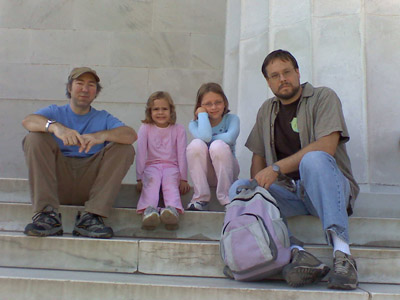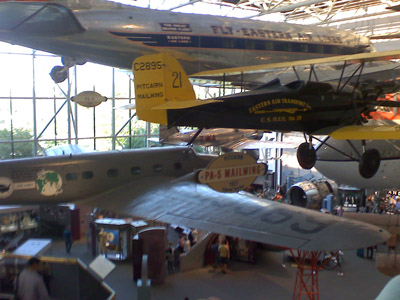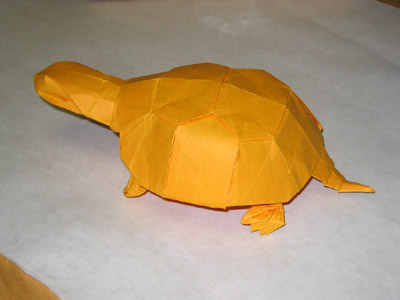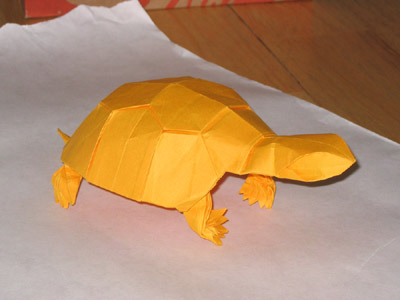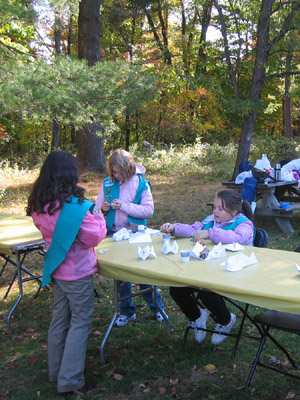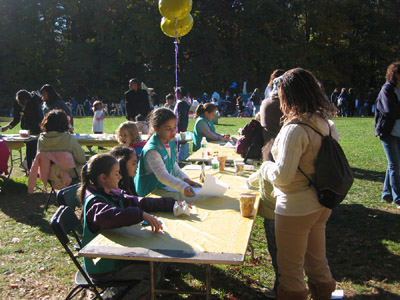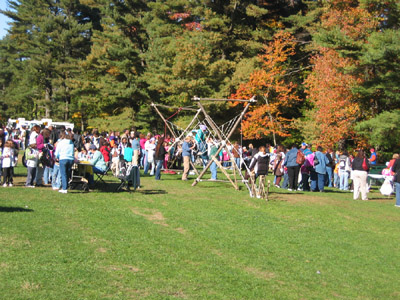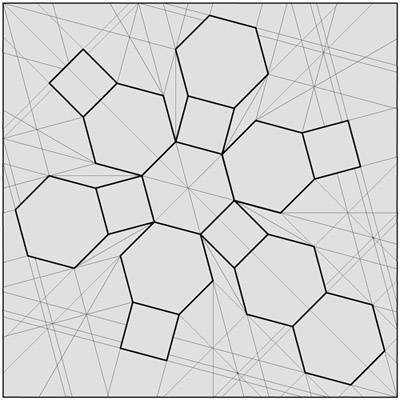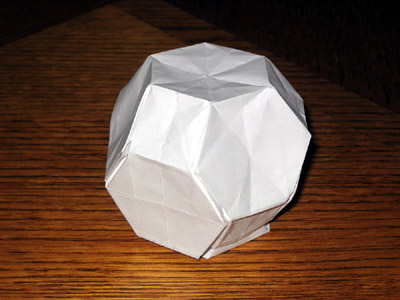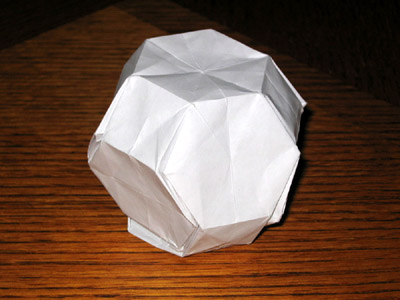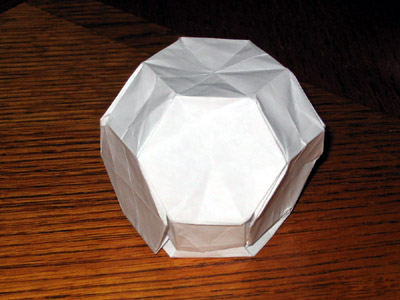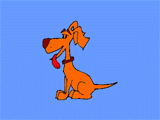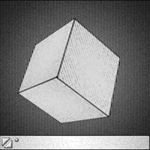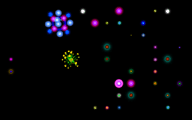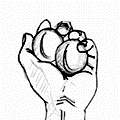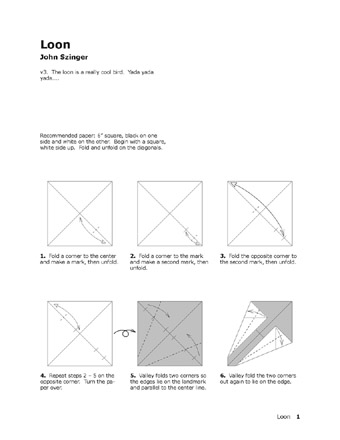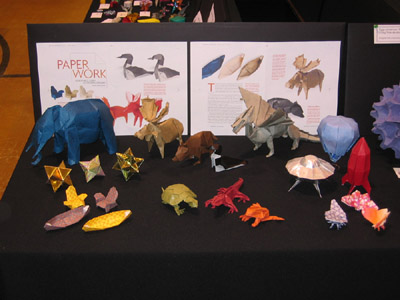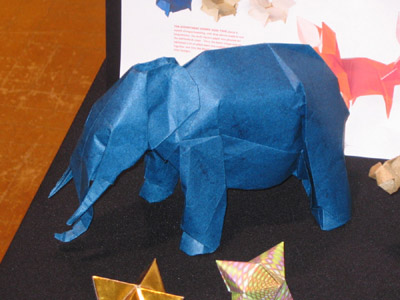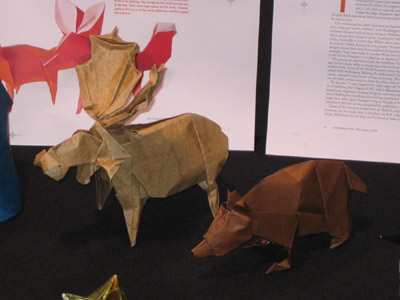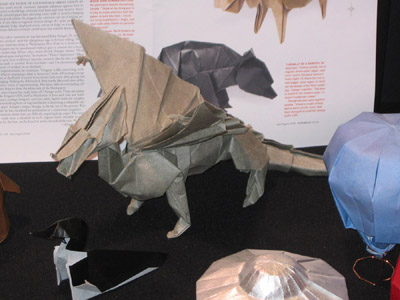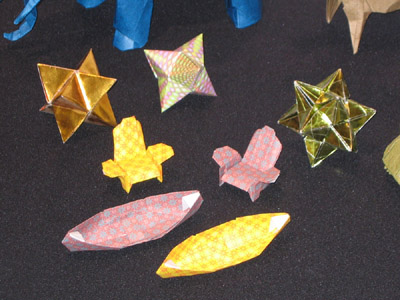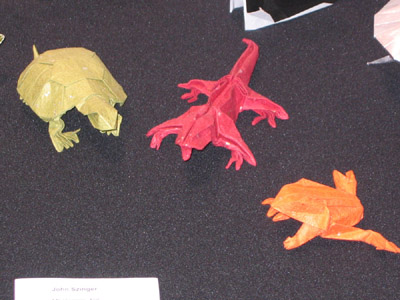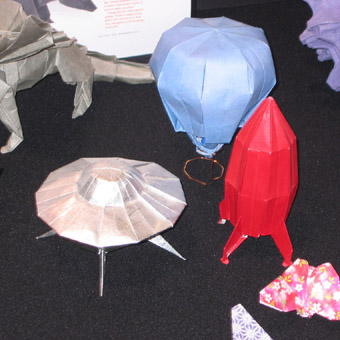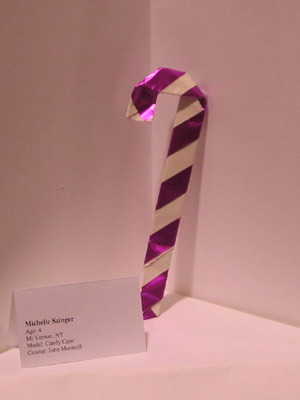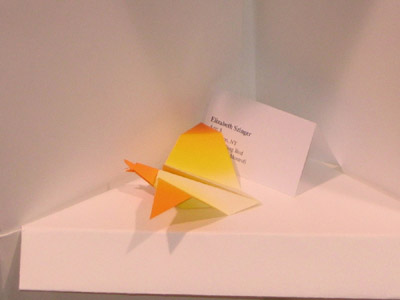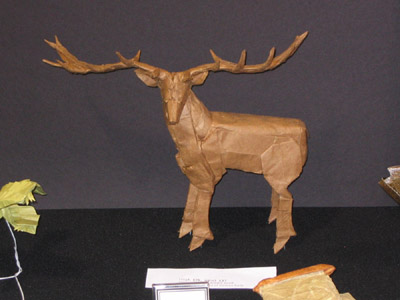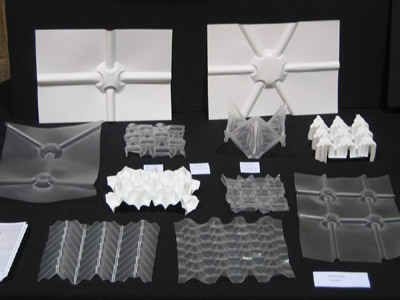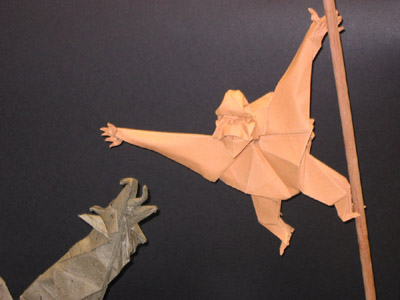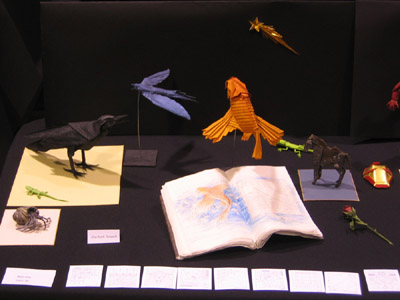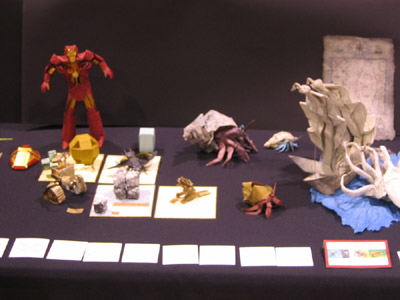Over the weekend we went to Washington to visit my friend John, who is an accomplished origami artist. It was a really fun trip.
But first the part about danger and adventure. About a month ago, after all our summer travels were over, I took my car into the shop for an oil change, tire rotation and new front brakes. Since that time, I’ve only driven to the train station and back, and have not taken the car about 30 mph (48 km/h). The kids had a half day of school on Friday, so we lit out for DC about 2 in the afternoon. The trip was great, the traffic smooth and light, and the weather turned from cool and cloudy to mild and sunny. But I after I got on the highway I started to notice a vibration in the front end, and as the trip went on it got worse. By the time we got off the Beltway it was pretty bad, and soon the front brakes were smoking! Luckily we made it to John’s house and there was a garage just a couple blocks away.
It turned out one of the tires was seriously worn along the outside edge, to the point where it was ready to blow out! I think the garage last month must have screwed up with the tire rotation, cuz this was not normal wear. On top of that the rear brakes were shot. So I got new back breaks and ended up getting four new tires, cuz one other tire was pretty badly worn and all of them were more than five years old in any event. Ah well, it was an expensive hassle, but I would have had to get this work done at some point, and all in all we were pretty lucky.
And it didn’t even slow us down very much. There are a lot of good restaurants in John’s neighborhood and Friday night we got Mongolian food. Saturday I got up early to deal with the car, and then we all took the train into downtown D.C. We went down the Mall to the Washington Monument, the Reflecting Pool and the Lincoln Memorial. I haven’t been there since high school, so it was interesting to see how the place had changed. For on thing they put up a slightly incongruous World War Two memorial right near the Washington Monument.
It’s also interesting how some thing haven’t changed. It’s a long walk (4 miles from the Capitol to the Lincoln Memorial and back), and you’d think they’d have trams or bicycles or something for the tourists in this day and age of fat America. It would also come in handy for people with kids or a bad ankle, or people who don’t want to walk the whole length of the Mall twice. Also the food selection is pretty meager, just a single concession stand with bad pizza and hot dogs and soda. You’d think there’d be row of places to get lunch.
The highlight of the day was the Smithsonian Air and Space museum. This is a fantastic place and I’ve been to it every time I’ve been to Washington. It’s full of spaceships, including such legendary craft as the Apollo 11 Command Module, and of a more recent vintage Spaceship One, and storied airplanes including the original 1903 Wright Flyer plus hundreds of later models from every era of experimental, military and commercial aviation. There used to be a Space Shuttle but that’s now gone. I understand they moved it to a new museum hall out near the airport.
The kids really loved it (as Jeannie I both did at that age), and I don’t think they ever really thought to spaceships as something real before, only an idea out of movies. I grew up in the 70’s and I remember the waning days of the Apollo program, Skylab, Viking and Voyager, and the development and debut of the Space Shuttle. All that stuff was really cutting edge back then; now it seems almost nostalgic. I mean, my 41-year old classic muscle car is built of the same technology that took humanity to the moon! I read in the paper today that the US will not have manned space light capability for the next five years and will have to pay Russia to send up our astronauts like dotcom zillionares do. Sigh, yet another failure of our government.
In any event the museum was a blast and it was a great day. When we got back to John’s neighborhood the garage was still open and I picked up the car. We get Peruvian food for dinner and played Settlers of Catan after. (It seems John always wins.)
John has a grand piano. It’s been a few years since I’ve played a grand. I used to play one a lot when I lived in California and hung out at my friend David’s house. My own piano is an upright, and it’s good for what it is, but a grand has a faster, better action and much more definition in the sound, especially in the bass registers and the very high end. So it was very enjoyable to play on that.
And of course we spent a lot of time talking origami. I folded some models out of his forthcoming book, a magnum opus of polyhedra and geometric origami. He has a chapter on polygons, including a regular pentagon and a golden rectangle. His pentagon is (folded from a square) is a very accurate approximation, but the golden rectangle is mathematically exact, which is very interesting because it’s only a few steps; the golden rectangle is latent in the square. I have been searching for year for a method to fold a regular pentagon (or a 36 degree angle), and his is the best I’ve seen. But it doesn’t beat the method I’ve come to prefer, which is basically to eyeball it, because I’ve gotten good at it with practice. In any event, since the golden ratio is expressed everywhere in pentagonal symmetry, I feel intuitively that there must be a way to develop a mathematically perfect pentagon from a golden rectangle. I plan on investigating this.
We spent some time considering the Archimedean Solids and their duals. I developed and folded a Truncated Octahedron from a square sheet of paper. This a really interesting shape, composed of eight hexagons and six squares and has the property of being able to tile space. To my surprise and delight, my design mainly worked, right up until I got closing the model and locking the last face in place with it’s neighbors. This ending stuff can be tricky but is essential to a nice model. My current design wants to spring apart, but it looks like I can get make it with stiffer paper and a slight adjustment of the layout of the faces on the paper.
Back in the office today I got a demo to Flash 10 from an Adobe evangelist. It has a lot of cool new API for doing 3D. My friend Veronique turned to me and said this would be cool for my origami software. She’s totally right, but this had the effect of making me sad because I’d love to have the time to work on that project again. I started it back in the dotcom bust when I was out of work and got a lot of design work done and start on a demo, but it would take months of full time work to get to the next level with it. Ah well, with the economy going the way it is maybe I’ll get my chance. Heh!


